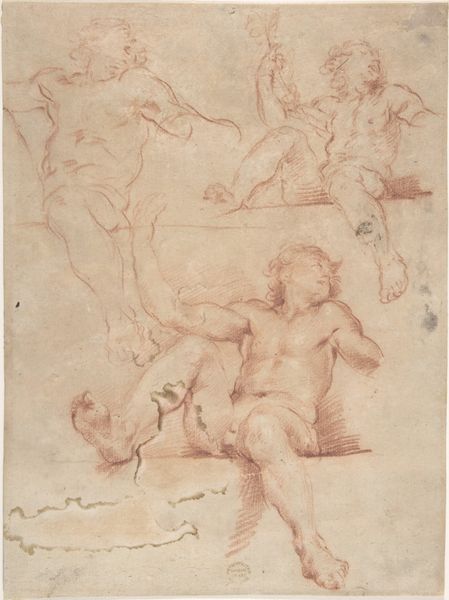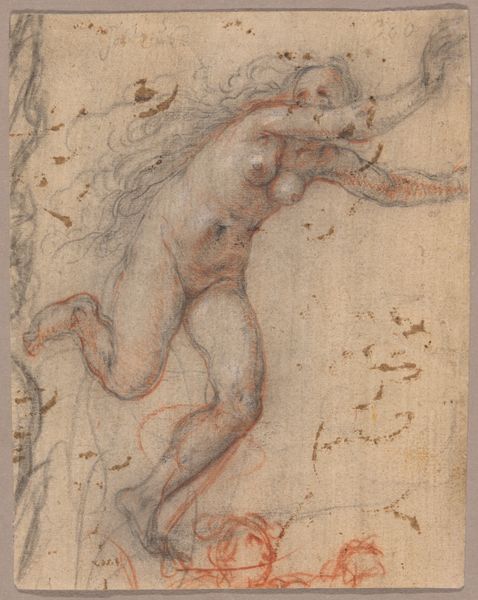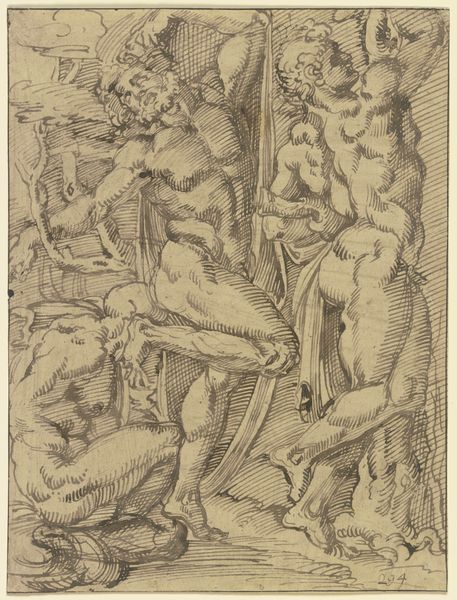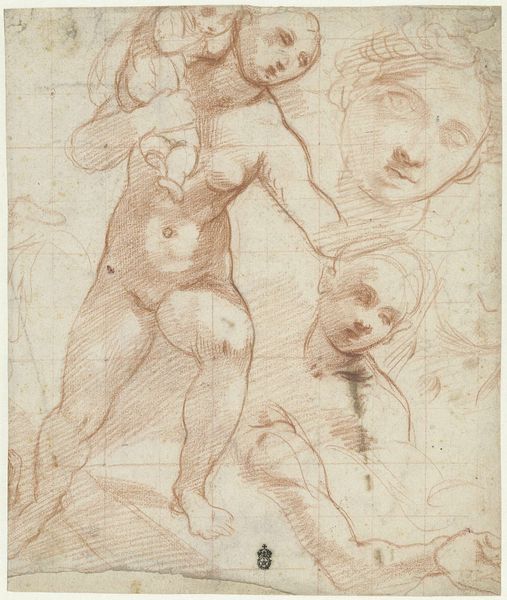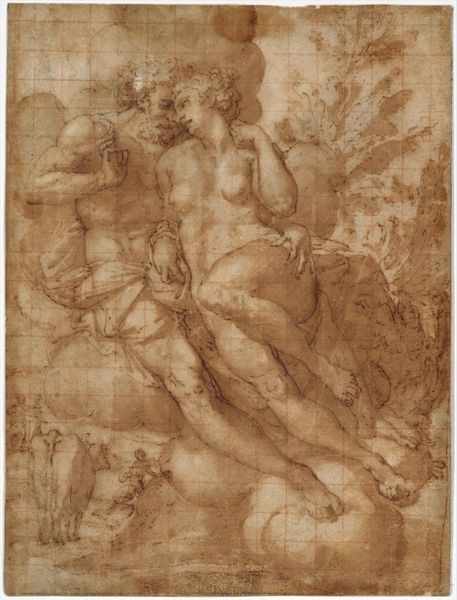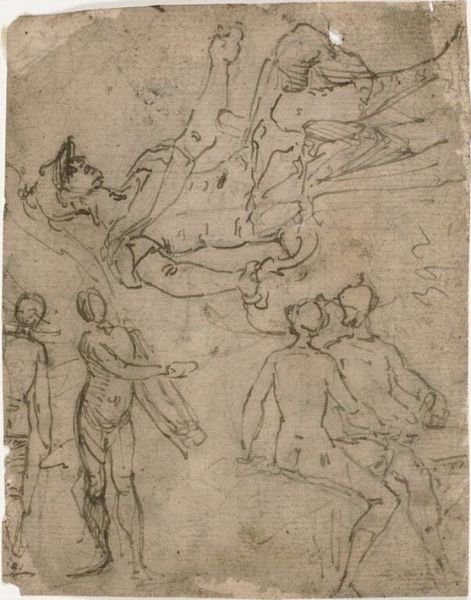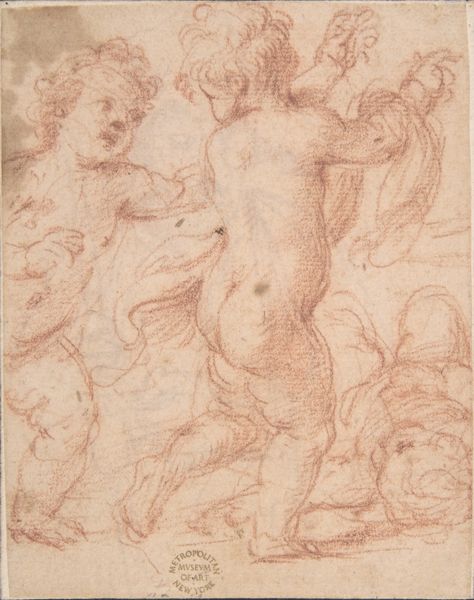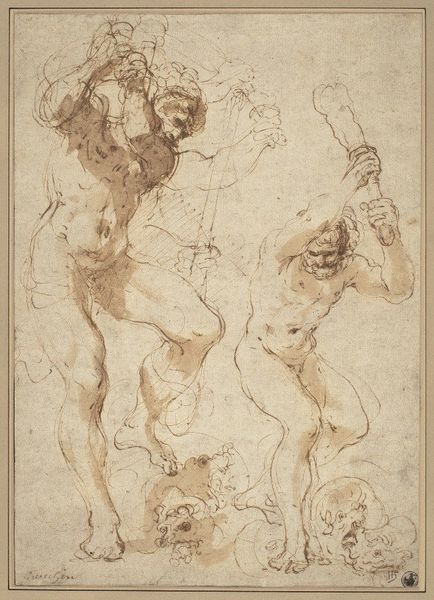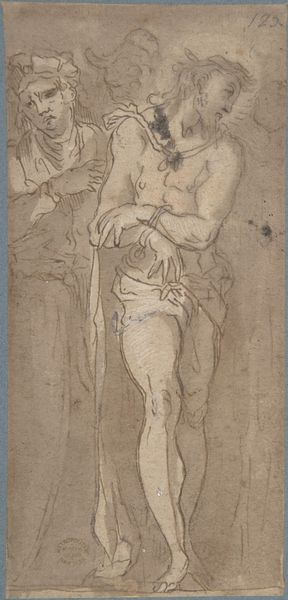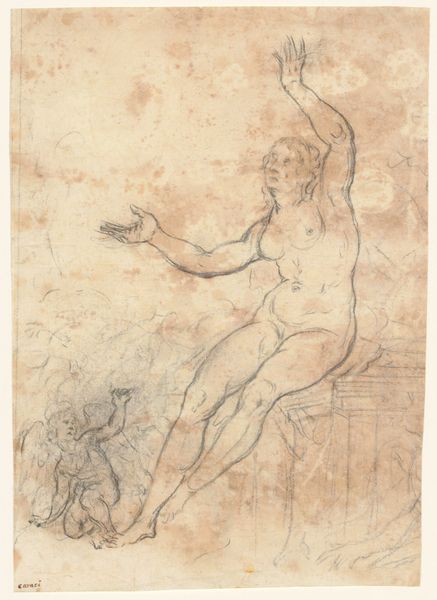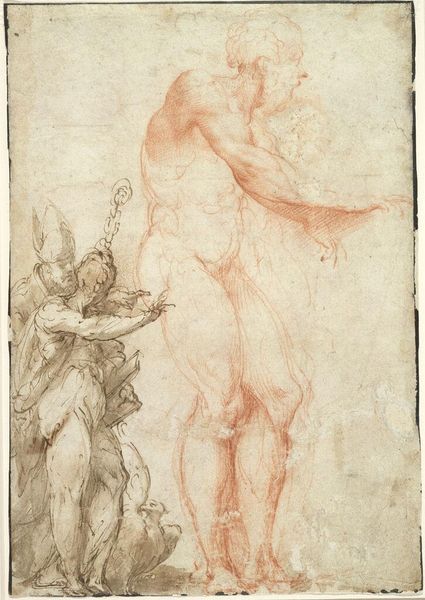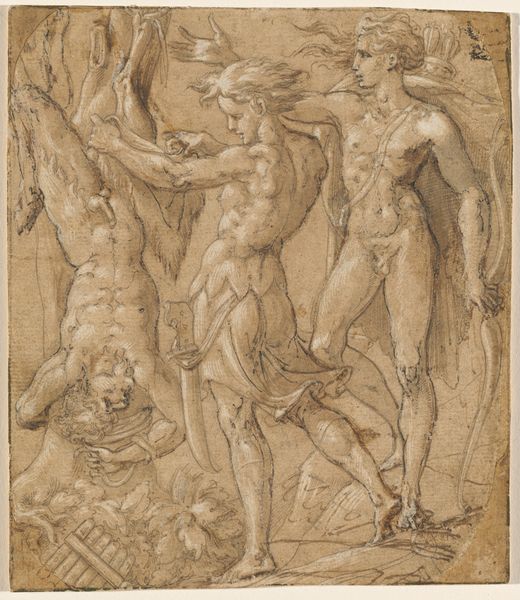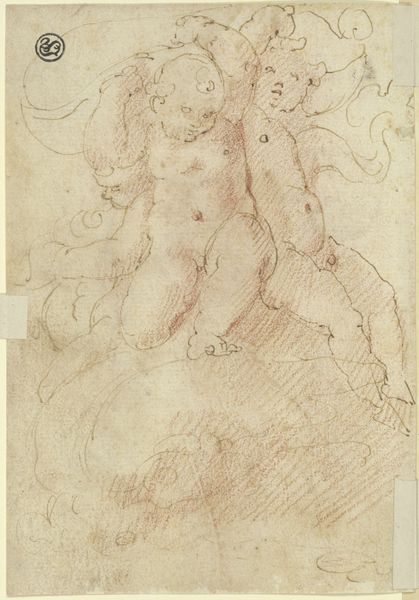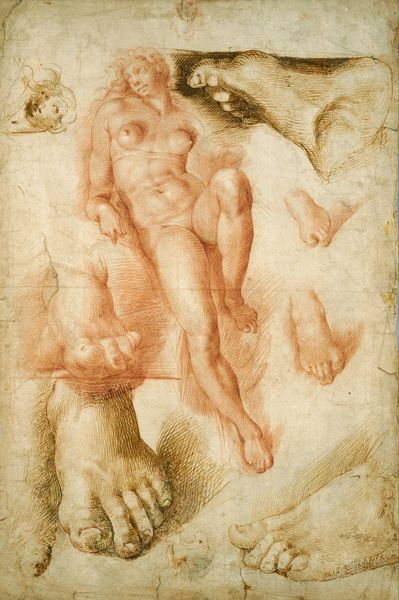
drawing, paper, chalk
#
portrait
#
drawing
#
figuration
#
paper
#
pencil drawing
#
chalk
#
academic-art
Dimensions: 417 × 266 mm
Copyright: Public Domain
Curator: "Sketches of Putti, Legs," rendered in chalk and pencil on paper by Ercole Procaccini the Younger. It’s held here at the Art Institute of Chicago. Editor: I find this study of cherubic figures—putti, to be exact—quite captivating. The way Procaccini captures light and form with just a few strokes evokes a dynamic sense of movement. Curator: It's interesting how these "innocent" putti become instruments for articulating very specific ideological messages, particularly when commissioned for opulent displays of wealth and power. Their persistent depiction, whether adorning celestial paintings, symbolizing Christian values, or as signifiers in funerary art, always points towards the embedded societal roles of children as innocent and obedient. Editor: Agreed, yet, if you bracket out their ideological role, you see the way Procaccini has subtly varied line weights to define the musculature, and the sophisticated handling of foreshortening. I'm drawn to the expressiveness achieved with such minimal means. Look at the foot, especially—the definition of the form with so little tonal variation. Curator: Exactly. We should be wary of viewing them in isolation of history, though. Considering gender, putti are overwhelmingly depicted as male. These angelic figures and cherubs enforce gendered notions onto spiritual narratives. So when examining a work like this, we must acknowledge that their depictions, however benign they seem, contributed to a restrictive cultural lexicon. Editor: Absolutely, it's essential to have that understanding and dialogue when confronting it. Still, I come back to what these sketches reveal about Procaccini's craft. Note the confident, sweeping gestures across the page and the sophisticated modelling of three-dimensional form within that spare medium. It has such incredible vitality. Curator: Seeing them through a feminist lens helps understand the complex messages these figures, though initially innocent, were used to further cement. In our current cultural climate, where concepts about gender, identity, and representation are fluid, it is imperative to see how historic imagery and representations, once presented without question, need critical consideration. Editor: Indeed, viewing art through a critical and thoughtful lens is essential. To consider that we’re witnessing, here, are not simply idealized forms, but forms invested with a social context that powerfully shapes their perception. I will surely see those innocent figures with more skepticism moving forward.
Comments
No comments
Be the first to comment and join the conversation on the ultimate creative platform.
